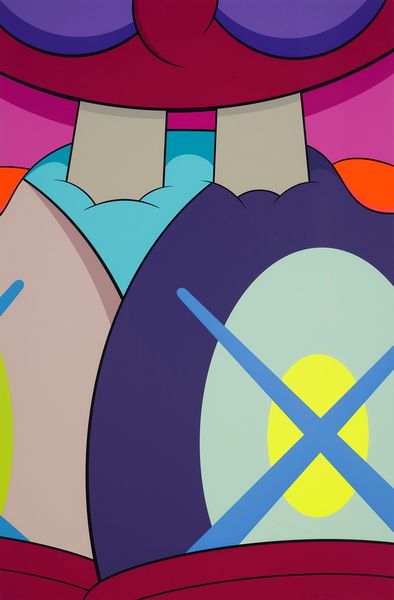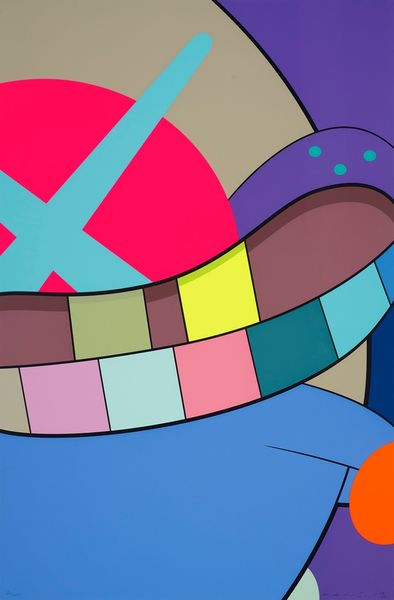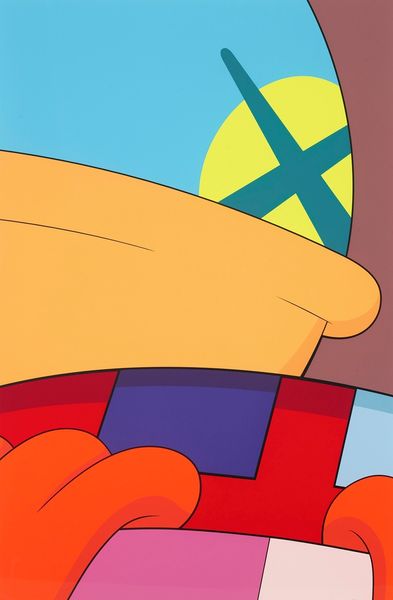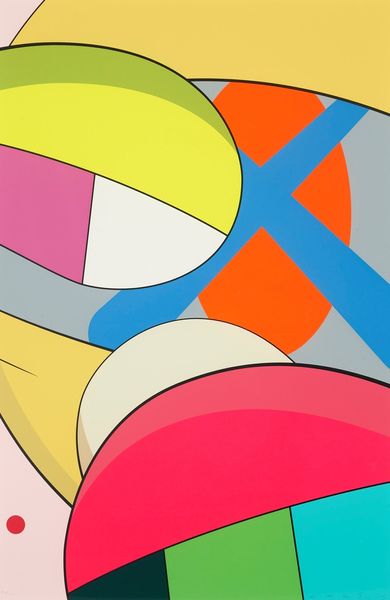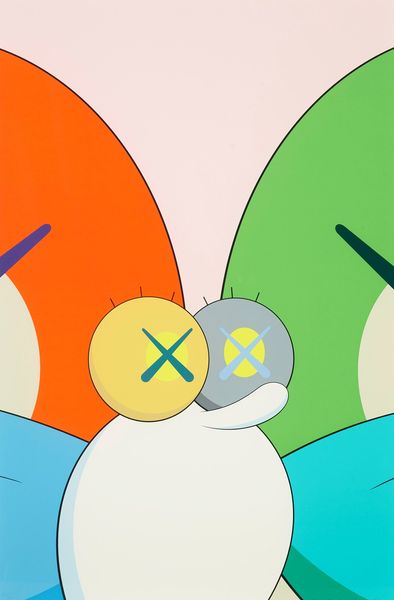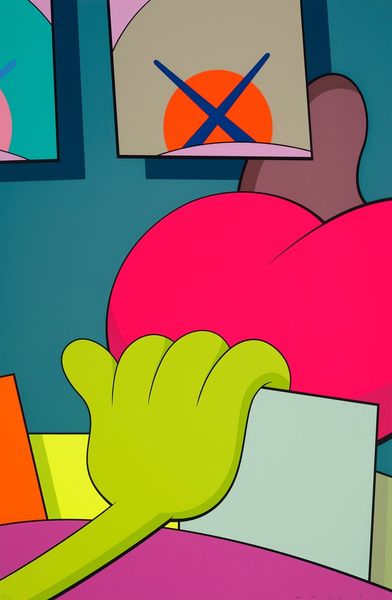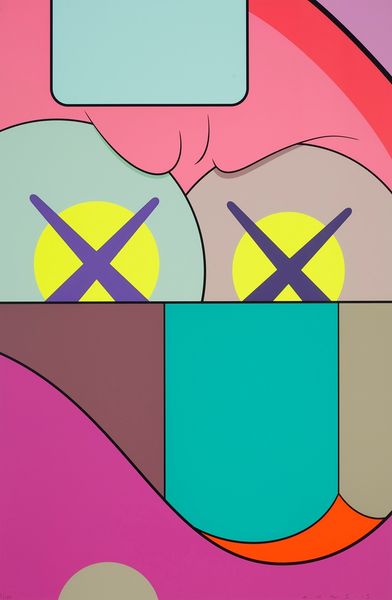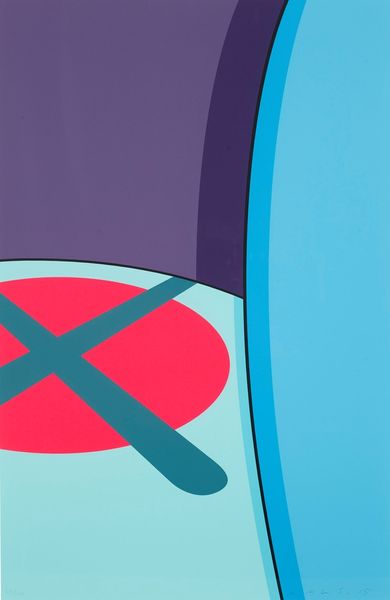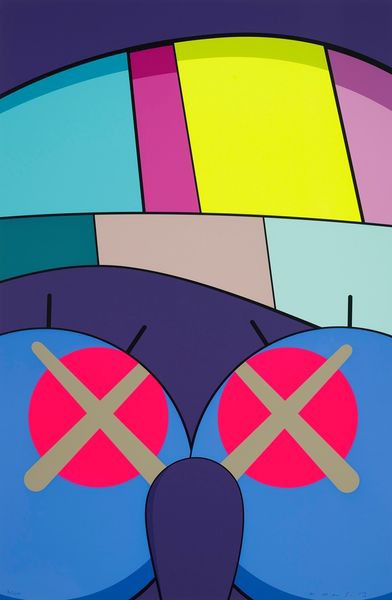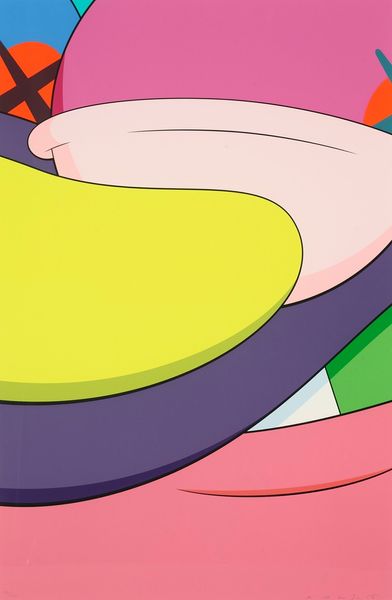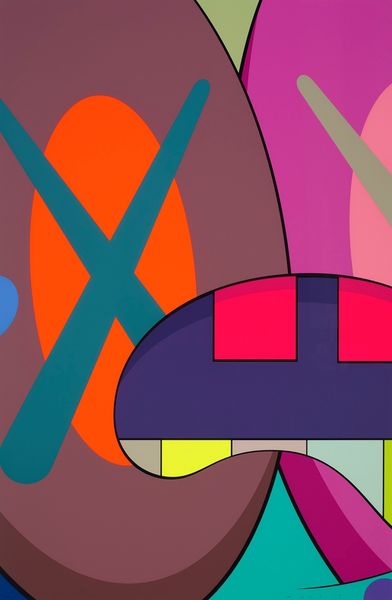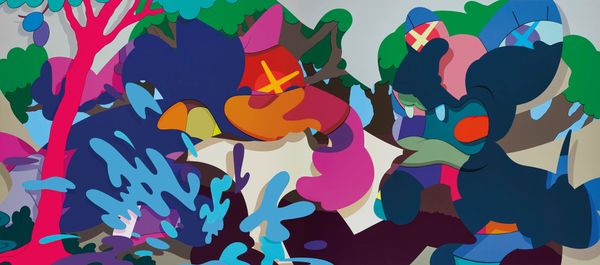
Copyright: Modern Artists: Artvee
Curator: Before us, we have KAWS’s 2015 piece, "You Should Know I Know." The artist has used acrylic paint, and we can easily see the influence of abstract expressionism. Editor: Immediately, I’m struck by its almost cartoonish aesthetic, but there's a simmering tension beneath the bright palette. It feels like childhood seen through a slightly warped lens. Curator: I'm intrigued by the title. It begs the question of knowledge – what should we know, and who is asserting this knowing? Looking at the clean, bold application of the acrylic, it almost feels mass-produced, questioning the value of art. How the materials serve the meaning matters. Editor: And note the repetition of the "X" motif, a symbol now synonymous with KAWS's work, often replacing the eyes of familiar cartoon characters. The symbol suggests absence or cancellation, hinting at something lost or obscured. Curator: That's precisely what KAWS does – he cleverly appropriates symbols from popular culture. It isn't so much high art as it is about deconstructing and remixing the familiar and commercial in novel, accessible ways. Editor: Yes, he plays with our collective memory. This layering creates a complex dialogue, inviting the viewer to bring their own experiences and decode those icons for what they are now to the culture at large. Curator: The process, that constant remixing and referencing, mirrors the rapid consumption of images in our digital age. The work is almost an examination of consumer culture. Editor: True, but this pop art sensibility offers layers of symbolism, where visual communication becomes a universal language, allowing access to commentary on cultural experience. It offers viewers common visual codes to tap into. Curator: It reminds me how boundaries can be blurred between commodity, artistic expression, and the act of repetitive manufacturing. And the question of the artwork's value, being accessible yet commanding high prices, just deepens that exploration. Editor: And the painting, with the eyes represented by an X shape is not necessarily negative, and perhaps marks a passage from one status or state to another, thus transforming an initial idea, memory, into another. Curator: It's fascinating how examining materials, process, and social context opens dialogues and exposes hidden connections in plain sight. Editor: Precisely. That intersection of cultural symbol and individual response offers a richer experience that stays with you.
Comments
No comments
Be the first to comment and join the conversation on the ultimate creative platform.
